What is it good for?
- To distil what you've learnt from your research
- To focus on the problem from your users' perspective
- To help you stay away from thinking about solutions
- To get you ready for idea generation
When to use it
Get the tool
Make a copy of the following worksheet and write your own User Needs Statements there. You'll also find some examples of good and not so good statements to guide you.
How to use it
After conducting user research, you'll likely have many insights that can feel overwhelming to process.
User needs statements help distill your research findings and maintain focus on your users' core needs. They also simplify prioritisation for your project. For best results, focus on just 1-2 user needs statements at a time to keep your project manageable.
User needs statements are concise, structured statements following a simple format. Written from the user's perspective, they're always based on your research insights. Here's the format:
- As a… [the person affected by the problem]
- When I... [the situation in which the problem occurs]
- I need/want/expect to…
- So that… [outcome I need]
Using the themes from your user research, draft your user needs statements using the template in the links below. Working in pairs helps reduce personal bias in your statements.
Remember that user needs statements should focus on what needs addressing, not how to solve it. Avoid jumping to solutions at this stage.
In the next exercise you'll be using these user needs statements to start to think about solutions.
